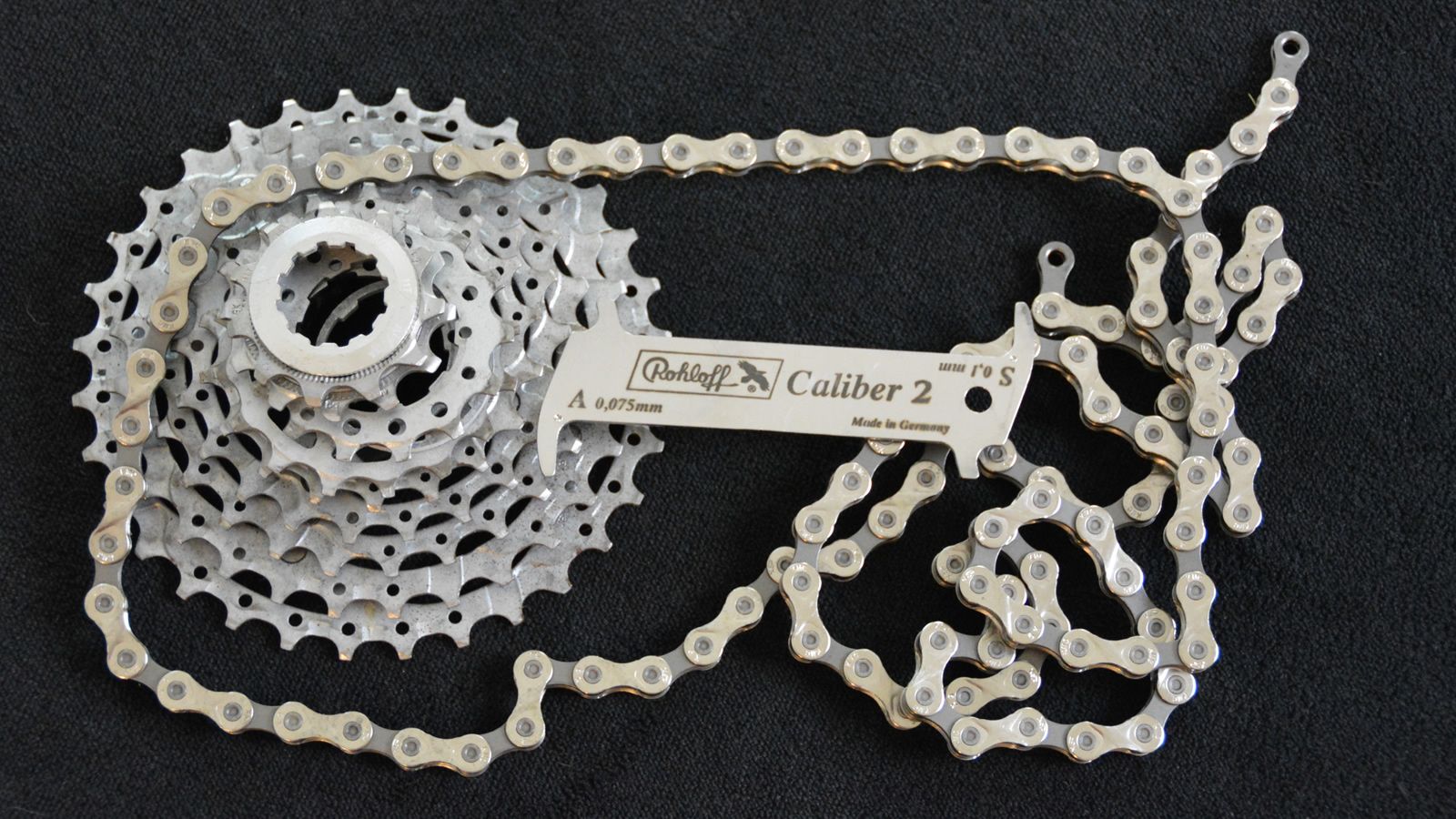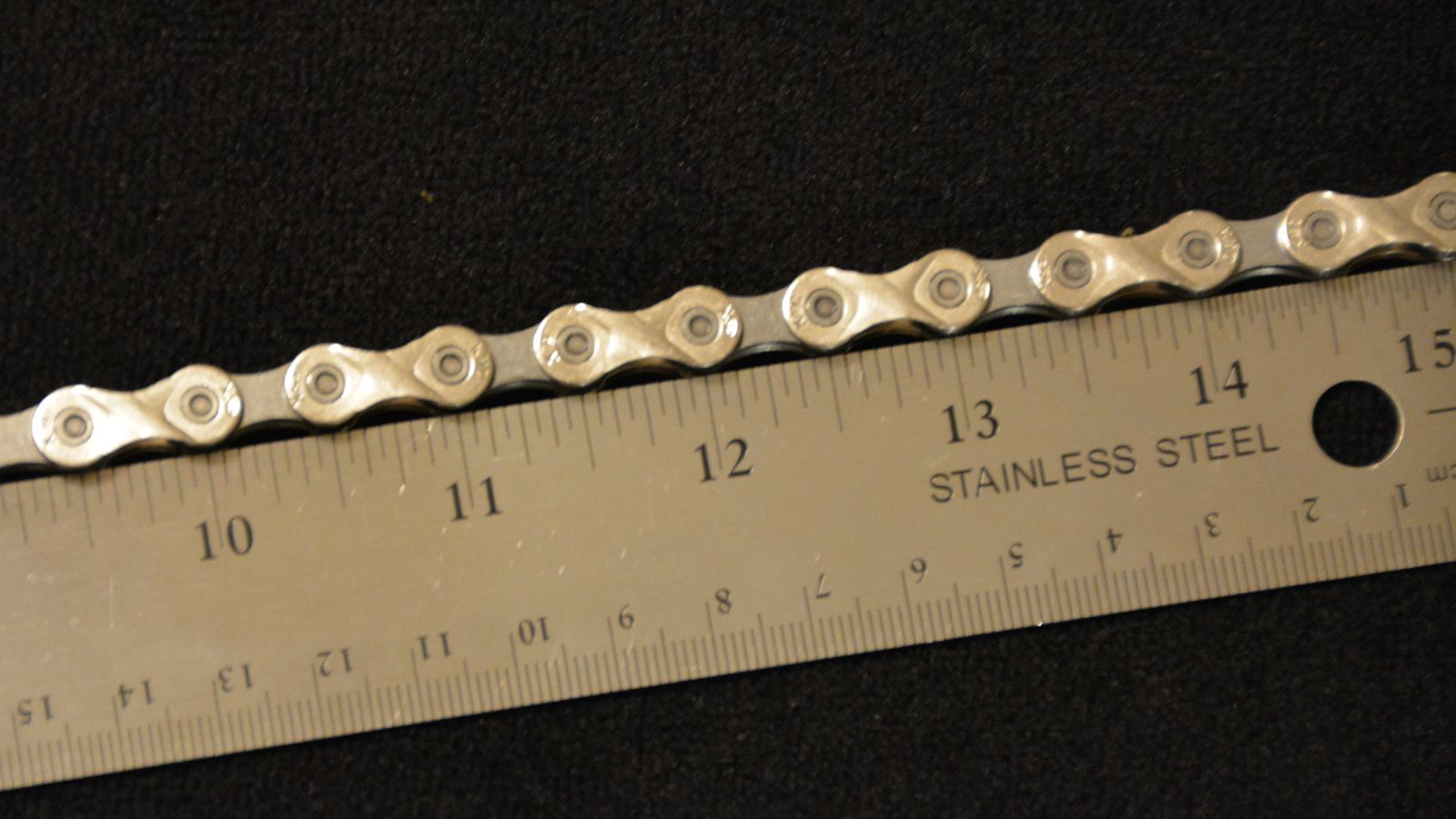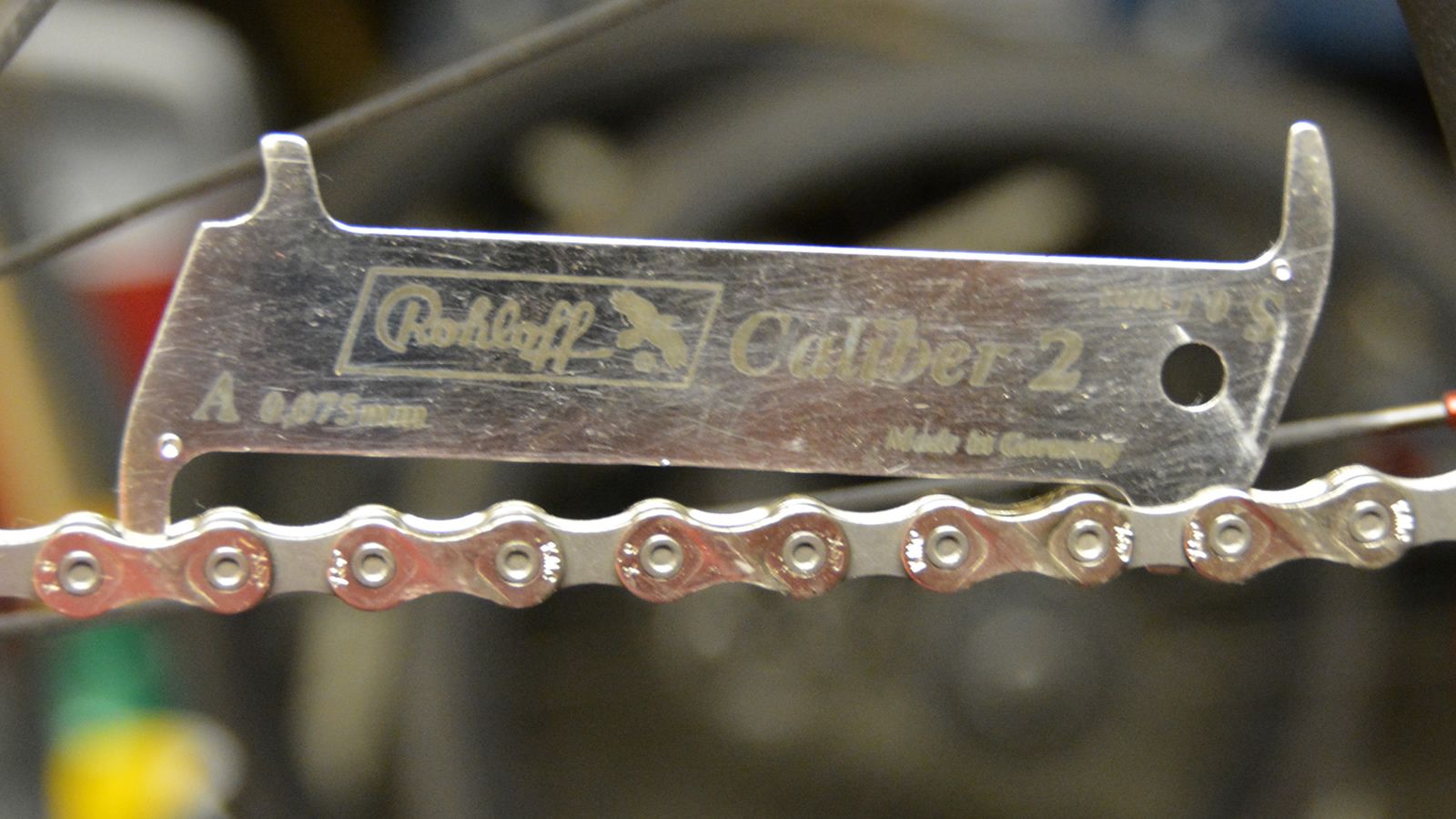Read update
- Verified content and links are updated.
Quick Links
Using a chain checker to measure how much your bicycle chain has stretched will save you big bucks in maintenance costs over the lifespan of your bikes. Just don't forget to use it!
UPDATE: 6/2/22
Verified content and links are updated.
Wait. What? Bike Chains Stretch?
It seems counterintuitive that anything so heavy and made of steel could stretch, but bicycle chains do. It's not that the steel itself stretches. What happens is all the little rollers, bushings, and pins that make up a chain wear, and as that happens the chain's "pitch"---that's the distance between each link---grows ever so slightly.
The industry standard pitch for derailleur chains is a half-inch (12.7mm) spacing between the pins. A chain is considered significantly worn when it exceeds that standard pitch by one percent. Because the chain has to fit into the teeth of the sprockets and chainrings, what happens is a stretched chain puts more pressure on the sides of the teeth, causing them to wear faster.
Stretched Bike Chain Symptoms
In time, a chain and the rear cog grow to "mate" with each other, and if you try to put a new chain on a worn cog, it won't fit into the worn teeth properly. It will actually skip as the chain slides over the teeth. It's usually most noticeable under pressure going up a hill and can be very unpleasant if you're standing up on the pedals when the crank suddenly lurches forward and threatens to send you over the handlebars.
You can ignore the problem and let a chain and cog grow old together, but what happens then is you eventually get chain "slop" which is extra side-to-side flexibility as the chain wears. A sloppy chain doesn't respond to the action of the derailleurs as well, and you get poor shifting and other problems like additional noise.
Lastly, a worn chain is weaker and more prone to break.
The problem has only gotten worse as manufacturers invent drivetrains with more and more gears and chains get progressively narrower. The latest 12-speed chains are nearly a full two millimeters narrower in outside diameter than the 5-speed chains of a few decades ago. The inner diameter has shrunk a bit too, which means the sprockets and chainrings are now narrower and more susceptible to wear. If you add in factors like hollow pins and outer plate cutouts on high-end---and super lightweight---chains, then a chain can have a very short lifespan.
Okay, So Chains Stretch. What Does Measuring Them Do?
Here's where you can save big if you buy a chain checker and remember to use it regularly---especially if your bike came with an expensive component group. When you replace a chain before it becomes too stretched and widens out the teeth on the rear cog, you significantly increase the lifespan of the cassette and chainring by preventing excessive wear.
Considering that the chain is the cheapest thing to replace on your drivetrain, you can save hundreds depending on what level of components you're running on your bike. Let's take high-end Shimano drivetrains for example. With XTR and Dura-Ace cassettes running between $150 and $200, and chains running $35, replacing chains to prolong the life of the cogs is a no-brainer.
Just Don't Forget to Use It
If you do buy a chain wear gauge, you must remember to use it regularly because if you wait just a little too long, the chain will stretch, you won't catch the problem, and you'll be stuck replacing both the chain and the cassette. The number of miles you ride is not a good indicator of when your chain might wear out as conditions like grit can drastically speed up chain wear. A good rule of thumb is to measure every time you clean your bike and oil the chain. It just takes seconds, so why not?
How To Use a Chain Checker
You could use a foot-long ruler to measure the distance between the chain pins, but it's hard to do it right. The pins should line up precisely with the 12 one-inch marks and anything over one percent longer than that is considered past the point of replacement, so it's a bit fiddly. Chain checkers, by contrast, are cheap and simple to use. The most common designs have a little hook at one end that fits over a chain roller, and then the other end has a small gauge that sticks out like a person's nose. You drop that end into the link, and if it goes down too far, then the chain is worn to the point it needs to be replaced.
Some chain wear gauges---like the Rohloff shown above---have two sides for different types of sprockets depending on the material they're made of like aluminum or titanium. On the Rohloff, I use the "A 0,075 mm" for aluminum even for steel cogs. I've found that waiting for the "S" side to show worn-out is too long and chains will skip.
The Best Chain Checker Options?
Rohloff Caliber 2 Chain Wear Indicator
Long a favorite with professional bike mechanics, the Rohloff Caliber 2 Chain Wear Indicator is a little more expensive than its competitors, but I've found them to be very reliable once I settled on always using the "A" side as my standard for when to replace a chain. Its small form makes it easy to use and store.
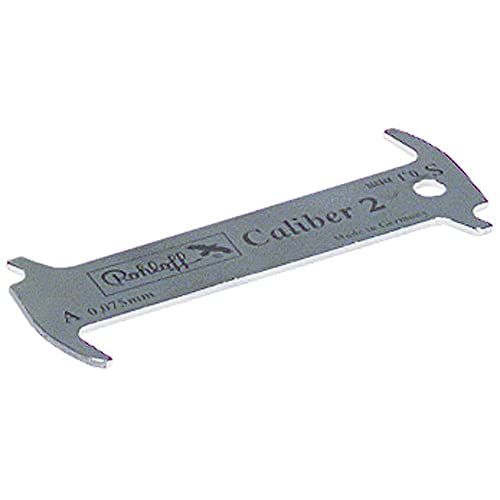
Rohloff 2368811000 Chain Wear, Grey, 8 x 3 x 3 cm
Rohloff is the old standby that can be found in mechanic's toolboxes everywhere.
Park Tool Chain Checker Bicycle Chain Wear Gauge
The design of the Park Tool Chain Checker Bicycle Chain Wear Gauge is a little different, and it contacts the chain in three places instead of two - which Park says adds to the accuracy. It's compatible with any derailleur chain---including the new Sram eTap AXS---to determine when a chain gets to .5 to .75 percent wear.

CC-4 - Chain Wear Indicator
The Park Tool Chain Checker Bicycle Chain Wear Gauge fits into the chain in three places for more accuracy.
Pedro's Tools Chain Checker Plus 2
Pedro's Tools Chain Checker Plus 2 has the same three contact point design as the Park version, but it also includes a chain hook on the opposite side which is used to hold the two ends of your chain together while you get ready to insert the master link when installing a new chain.
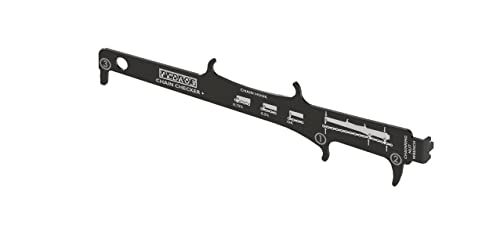
Chain Checker Plus II, Black
The Pedro's Chain Checker Plus 2 includes a chain hook on the top for multi-function use.
KMC Digital Chain Checker
If you're a tool geek and want to go full Mac Daddy, then the KMC Digital Chain Checker is for you! KMC claims it's the most accurate chain wear gauge on the market, but unlike other designs, it requires human pressure to push the rollers apart to measure the distance instead of the "drop-in" style of cheaper tools, which let gravity do the job.
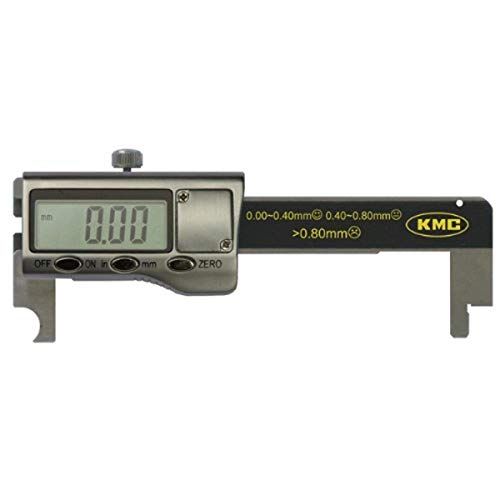
KMC Digital Chain-Checker
It ain't cheap, but the KMC Digital Chain-Checker is the Cadillac of chain wear gauges.
Use a Chain Checker and Save
Just like changing the oil in your car at specific mileage intervals, consistently measuring your bike chain with a chain stretch tool is just a very easy way to save big bucks on bike maintenance and keep your rides running at optimum performance. Plus, the gauges are so inexpensive that there's no reason not to.
And, now that the majority of chain manufacturers (including Shimano) offer master link systems with their chains, replacing them is much easier than it used to be when you had to know how to push chain pins in just the right amount when connecting the two ends of the chain. All you need to do is use a tool to break the chain at the same length as the old one and connect it with the master pin, and you're ready to ride, so no excuses!

